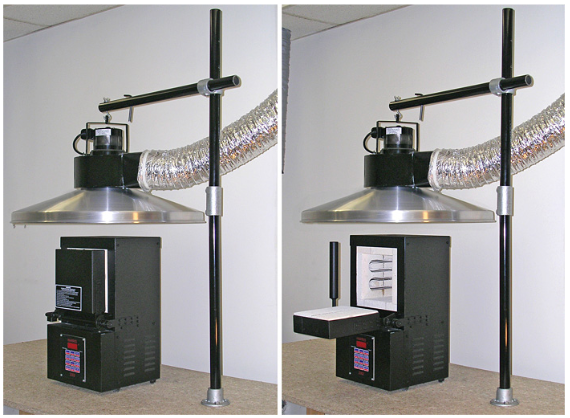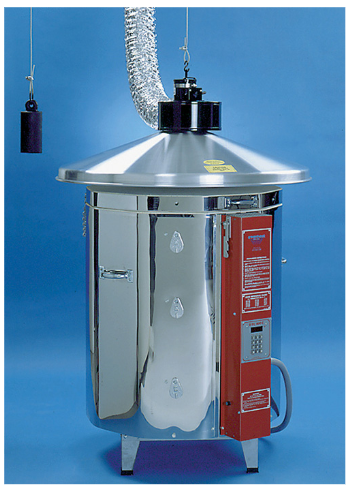Whether you’re a student, a seasoned engineer, or a hobbyist exploring the vast possibilities of FFF Metal 3D printing, understanding how to vent your kiln is important. In this blog post, we’ll delve into the requirements for venting your kiln to ensure a smooth and efficient operation.
Importance of Venting:
Venting is an important component of kiln operation. There is a small amount of off-gassing that occurs as the binder leaves your printed part during the debind phase of the process (the binder off-gasses as lactide, which is nontoxic). Proper venting helps keep you safe.
Kiln Setup:
Requirements indicated by the manufacturers of the kilns that The Virtual Foundry sells**:
| FireX and FireX Max | The Virtual Foundry Sintering Kiln | |
| Installation Location | Install it in a well ventilated, sheltered area such as a carport, garage, utility or hobby room. Allow a MINIMUM 18 inches (46 cm) of space between your kiln and adjacent walls, other kilns, shelving, etc. | Do not install the oven closer than 12” (31cm) from combustible wall surfaces or objects or 36” from any ceiling surface. Install in a covered, well ventilated area. |
| Statement About Venting | Ventilation is key to maintaining a healthy work environment and proper room temperature. | Install in a covered, well ventilated area. Do not place the oven in any structure resembling a carport or screened-in porch. Avoid areas that are subject to outdoors weather. It is the user’s responsibility to provide ventilation capable of removing all gasses, fumes and other airborne contaminants produced by the ware during firing safely from the work area and building structure. |
Ventilation System Design:
Ensure that you are drawing air away from the kiln while it is running.
This can be as simple as a setup that mimics a kitchen vent hood. Consider the size and capacity of your kiln when determining the ventilation system’s specifications to ensure adequate airflow.
Take a look at some examples from the Vent-A-Kiln website*.
Table-Mounted Ventilation Systems

Overhead Kiln Ventilation Systems

What if you are using an inert atmosphere?
The Virtual Foundry’s FFF Metal process is designed to perform in open atmospheric conditions, meaning no gas or vacuum is required.
During sintering, oxygen needs to be prevented from reaching your metal part. In open atmosphere, we use Sintering Carbon. As an alternative, you may choose to use inert gas and/or vacuum to clear the oxygen from your kiln’s chamber.
In this case, ventilation requirements will depend on the gas and how you are using it. Review your ventilation requirements with your institution’s safety officer or a safety expert. The Virtual Foundry is unable to support this process or provide guidance.
Note: Oxygen is helpful for debinding so if you are using gas and/or vacuum to manage oxygen during sintering, wait until the debind process has fully completed before applying gas or vacuum.
Conclusion:
In the world of metal 3D printing, success hinges on precision, and proper kiln venting is a key factor in achieving consistent and high-quality results. The Virtual Foundry encourages every enthusiast and professional to prioritize the implementation of effective venting systems to enhance both the efficiency and safety of their kiln operations. By adhering to these venting requirements, you pave the way for a seamless and successful metal 3D printing journey.
Happy Printing!
*The Virtual Foundry has no affiliation with Vent-A-Kiln
**This blog post provides general information and discussion about safe kiln operation. The words and other content provided in this blog post and in any linked materials are for general informational purposes only. It is the reader’s responsibility to consult with their kiln manufacturer’s recommendations and consult their own safety experts. Do not rely on this blog post for complete information.
